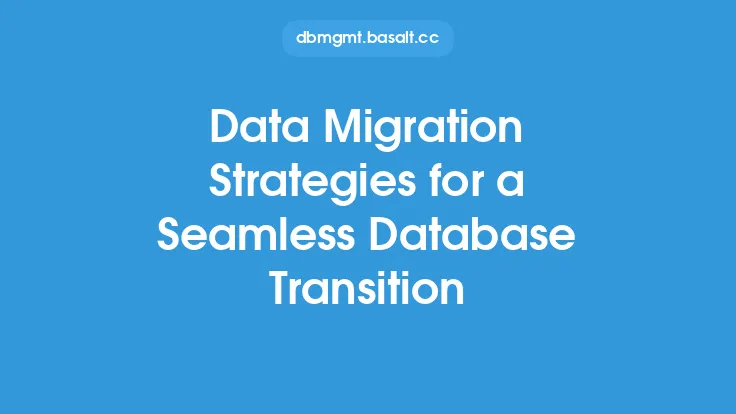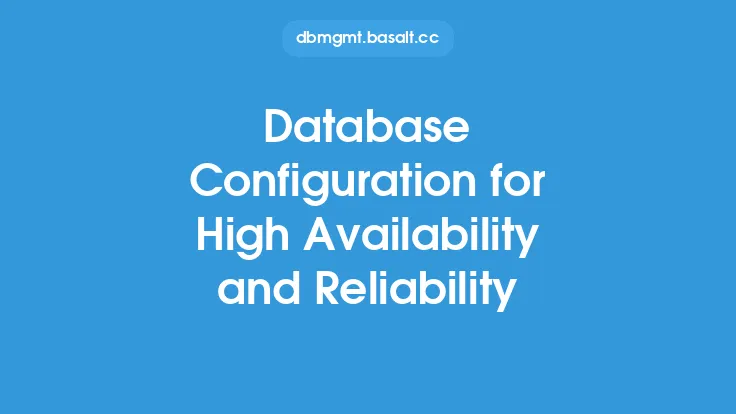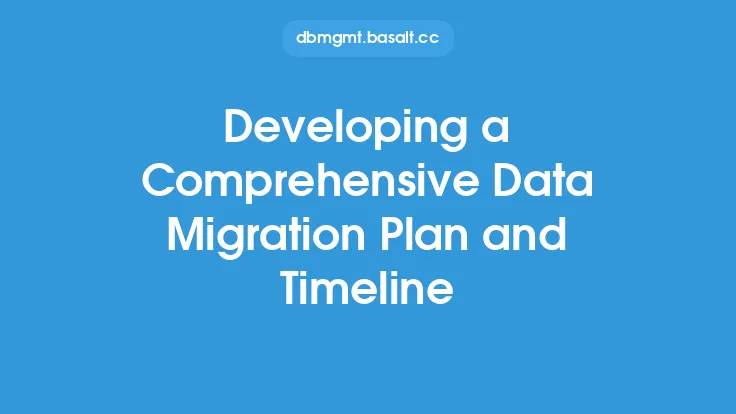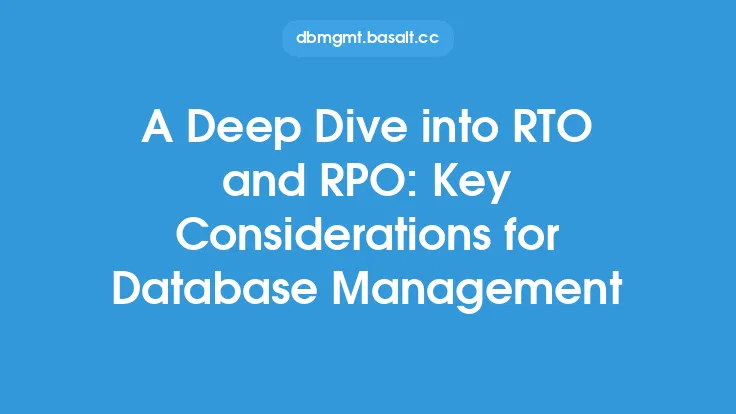When it comes to maintaining and updating a database, one of the most critical considerations is minimizing downtime. Downtime can result in lost productivity, revenue, and customer satisfaction, making it essential to have a well-planned upgrade and migration strategy in place. In this article, we will explore the various database upgrade and migration strategies that can help minimize downtime, ensuring that your database remains available and accessible to users.
Understanding Database Upgrade and Migration
Database upgrade and migration refer to the process of transitioning a database from one version, platform, or architecture to another. This can be necessary for various reasons, such as taking advantage of new features, improving performance, or ensuring compatibility with other systems. However, this process can be complex and time-consuming, requiring careful planning and execution to minimize downtime.
Pre-Upgrade and Migration Planning
Before starting the upgrade or migration process, it is essential to conduct thorough planning and preparation. This includes assessing the current database environment, identifying potential risks and challenges, and developing a detailed project plan. The plan should include timelines, milestones, and resource allocation, as well as a contingency plan in case of unexpected issues.
Database Assessment and Analysis
A thorough database assessment and analysis are critical components of the pre-upgrade and migration planning process. This involves evaluating the current database schema, data structures, and dependencies, as well as identifying potential bottlenecks and areas for improvement. The assessment should also include a review of the database's performance, security, and compliance requirements.
Upgrade and Migration Strategies
There are several upgrade and migration strategies that can be employed to minimize downtime, including:
- In-Place Upgrade: This involves upgrading the database in its current location, without moving it to a new platform or architecture. This approach can be faster and less disruptive, but may require more downtime.
- Side-by-Side Migration: This involves creating a duplicate database on a new platform or architecture, and then switching to the new database once it is fully populated and tested. This approach can be more complex, but allows for minimal downtime.
- Phased Migration: This involves migrating the database in phases, with each phase involving a subset of the data and applications. This approach can be more time-consuming, but allows for minimal disruption to users.
Minimizing Downtime
Minimizing downtime is critical during the upgrade and migration process. This can be achieved through various techniques, including:
- Database replication: This involves creating a duplicate copy of the database, which can be used to serve users during the upgrade or migration process.
- Load balancing: This involves distributing traffic across multiple servers, to ensure that users can continue to access the database during the upgrade or migration process.
- Rolling upgrades: This involves upgrading the database in a rolling fashion, with each node or server being upgraded in sequence. This approach can help minimize downtime, by ensuring that at least some nodes or servers are always available.
Testing and Quality Assurance
Thorough testing and quality assurance are essential components of the upgrade and migration process. This involves testing the database for functionality, performance, and security, as well as verifying that all applications and dependencies are working correctly. The testing process should include a range of scenarios, including stress testing, load testing, and failover testing.
Post-Upgrade and Migration Activities
Once the upgrade or migration is complete, it is essential to conduct post-upgrade and migration activities, including:
- Monitoring and tuning: This involves monitoring the database's performance and tuning it as necessary, to ensure optimal performance and efficiency.
- Security and compliance: This involves verifying that the database is secure and compliant with relevant regulations and standards.
- Documentation and training: This involves updating documentation and providing training to users and administrators, to ensure that they are familiar with the new database environment.
Best Practices
To ensure a successful database upgrade and migration, it is essential to follow best practices, including:
- Develop a detailed project plan: This involves creating a comprehensive plan that outlines timelines, milestones, and resource allocation.
- Conduct thorough testing and quality assurance: This involves testing the database for functionality, performance, and security, as well as verifying that all applications and dependencies are working correctly.
- Minimize downtime: This involves using techniques such as database replication, load balancing, and rolling upgrades, to ensure that users can continue to access the database during the upgrade or migration process.
- Provide training and documentation: This involves updating documentation and providing training to users and administrators, to ensure that they are familiar with the new database environment.
Conclusion
Database upgrade and migration can be complex and time-consuming processes, requiring careful planning and execution to minimize downtime. By following the strategies and best practices outlined in this article, database administrators can ensure a successful upgrade or migration, with minimal disruption to users. Remember to conduct thorough planning and preparation, assess and analyze the current database environment, and employ techniques such as database replication, load balancing, and rolling upgrades, to minimize downtime and ensure a smooth transition to the new database environment.





